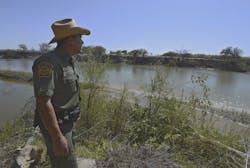Border Patrol asks industry for sensors and enabling technologies to watch difficult-to-monitor waterways
WASHINGTON – U.S. border security experts are asking the sensors industry for new ways to monitor ship and boat traffic on streams, rivers, and lakes.
Officials of the Border, Immigration and Maritime Division of the U.S. Department of Homeland Security (DHS) Science and Technology Directorate in Washington have issued a request for information (70RSAT20RFI000004) for the Unattended Sensor Technologies for Monitoring Riverine and Littoral Zone Vessel Traffic project.
Solutions should involve automated detection, identification, classification, tracking, and alerting Border Patrol agents who are monitoring waterways for interdiction of suspicious activity.
Related: Enabling technologies for port and harbor security
Border Patrol agents who monitor waterways along international borders often have limited or no surveillance capabilities. Complicating keeping watch on these areas can be ridges along banks or deviated shorelines that provide naturally occurring concealment opportunities such as coves and isles and overgrown vegetation.
These conditions can limit the effectiveness of existing short-, mid-, and long-range surveillance technologies. To overcome these limitations, DHS officials want technologies for improved situational awareness of mechanized surface watercraft passing through remote, difficult-to-monitor border waterways.
Technology solutions should be affordable; quick to transport and deploy; offer unattended remote operations; connect to Border Patrol command centers; able to detect, identify, classify, track, and alert on vessels of interest autonomously -- including location, range, bearing, and speed.
Related: The role of technology in securing the nation’s borders
Technologies should be able to operate year-round, day and night; be easy to use; foil computer hackers; scale from small to large installations; and over open architectures and data sharing.
Companies interested should email five-page white papers about their systems to DHS no later than 25 March 2020 at WaterwaysUSS_RFI@hq.dhs.gov. Email questions or concerns to WaterwaysUSS_RFI@hq.dhs.gov.
More information is online at https://beta.sam.gov/opp/831c684923b54979b3edc1cd95633e60/view.

John Keller | Editor-in-Chief
John Keller is the Editor-in-Chief, Military & Aerospace Electronics Magazine--provides extensive coverage and analysis of enabling electronics and optoelectronic technologies in military, space and commercial aviation applications. John has been a member of the Military & Aerospace Electronics staff since 1989 and chief editor since 1995.

